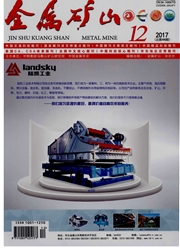

 中文摘要:
中文摘要:
水平移动系数b是开采沉陷预计的重要参数之一,对于精确确定开采沉陷地表影响范围具有决定性作用。为精确有效地计算b值,进而提高开采沉陷的预计精度,首先详细分析了R语言特点及随机森林(Random forest,RF)算法的基本原理及实现流程;然后,详细探讨了影响b值的地质采矿因素,并确定了5个基本变量,即开采厚度、煤层倾角、开采深度、工作面斜长、覆岩评价系数;最后,结合R语言构建了一种RF回归模型并用于预计b值。用于训练和测试RF回归模型的样本来源于我国一些主要矿区的典型地表移动观测站实测资料,试验结果表明:利用基于R语言编程的RF回归模型预计的b值与实测值的最大相对误差仅为4.559%;相对于BP神经网络、支持向量机(Support vector machine,SVM),RF回归模型在预计精度和模型稳定性等方面优势较明显,且该模型具有较强的泛化能力,可基本满足实际工程需要,为高精度预计b值提供了一种有效方法。
 英文摘要:
英文摘要:
As one of the important parameters of mining subsidence prediction,the horizontal displacement factor b plays a decisive role in determining the scope of the surface effect of mining subsidence. In order to calculate the b value effectively and accurately,and thus improve the accuracy of mining subsidence prediction with high efficiency. Firstly,the main characteristics of R language and the basic principle of random forest( RF) algorithm and its implementation process are analyzed in depth; then,the geological and mining factors that affecting the change of b value are discussed,the five basic variables such as mining thickness,dip angle of coal seams,mining depth,slanting length of working face,overlying rock evaluation coefficient are determined; finally,the RF regression model is established based on R language,and it is used to prediction the b value. The traning samples and test samples of the RF regression model is the measured data obtained from the typical surface movement observatorys located in the main mining area in our country,the experimental results show that maximum relative error of the measured data and the prediction results of the RF regression model based on R language is only 4. 559%; the prediction accuracy and stability of the RF regression model are superior to the BP neural network and support vector machine( SVM),besides that,the generalization ability of RF regression model is strong,it can meet the actual engineering requirements and provide a effective method for predicting the b value.
 同期刊论文项目
同期刊论文项目
 同项目期刊论文
同项目期刊论文
 期刊信息
期刊信息
